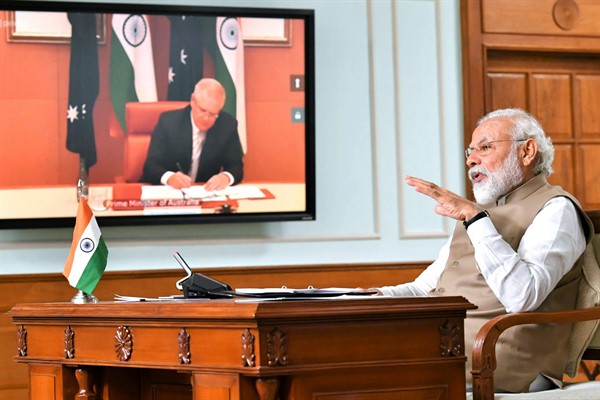Had Scott Morrison traveled to New Delhi as planned in January, it would have been the fourth such trip by an Australian prime minister in a decade, a testament to the considerable effort successive governments in Canberra have made to build a viable strategic partnership with India. But a bushfire crisis at home, as well as the coronavirus pandemic, forced Morrison and his Indian counterpart, Narendra Modi, to settle for a virtual summit on June 4.
If the two leaders were disappointed by this outcome, they certainly did not show it. Both took to social media to make a show of bilateral friendship, with Morrison posting pictures on Twitter of homemade vegetarian “ScoMosas”—a play on his nickname, ScoMo, and samosas—and expressing regret that Modi could not taste one. On cue, the Indian prime minister replied that they looked “delicious.”
This contrived bonhomie might have conveyed the mistaken impression that the video meeting lacked substance. In fact, the lengthy joint statement that followed the summit detailed several significant agreements, as well as the elevation of the relationship to a “comprehensive strategic partnership.” That formal change in status signals both countries’ desire to work more closely together on issues of mutual interest and to deepen their economic and security ties.

